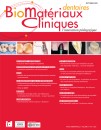Definition of ABRZ
The Acid Base Resistant Zone (ABRZ)1 is firstly reported [1] in 2004 as a part of the microstructure observed at the dentin-bond interface after the applications of weak2 acidic and basic solutions. In this SEM observation, 4 kinds of adhesive materials combined with 2 kinds of composite resins, that is, Reactmer Bond and Reactmer Paste (RB/RP), Clearfil SE Bond and Clearfil AP-X (SE/APX), experimental adhesive and APX (ABF/APX), and Single Bond and APX (SB/APX) were used for the comparison. RB is a fluoride releasing, one-step self-etching type adhesive3 combined with a fluoride releasing composite resin4 (RP). SE is a 2-step, self-etching type adhesive combined with a hybrid type composite resin(APX). ABF is a 2-step, self-etching type adhesive releasing fluoride. SB is an etch and rinse type adhesive5 using the most aggressive etchant among the 4 kinds of adhesives. After the bonding was performed, the specimens were stored in water for 1 week, and then, they were immersed sequentially in an artificial solution (pH 4.5) for 20 min and in 5% NaOCl for 20 min. This experimental procedure was expected to simulate the secondary caries at the dentin bond interface of cavity margin. After sectioning the specimens, the dentin-adhesive interface was examined by SEM.
Figure 1 shows the dentin-adhesive interface of SE/APX group. The hybrid layer of dentin is observed adjacent to the bonding resin. The thickness of the hybrid layer is around 1 micrometer since the etching effect of the self-etching primer is very mild. Interestingly, adjacent to the hybrid layer, a thin dentin like structure6 is observed at the dentin side. This layer is seen to be similar to dentin at the cavity bottom, however, it exhibited the resistance to the acid-base challenge. That is the reason why this layer was named as acid base resistant zone (ABRZ).
In the paper, the thickness7 of ABRZ of dentin was variable among the tested adhesive materials as shown in…














